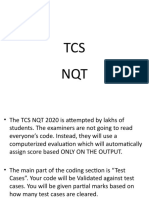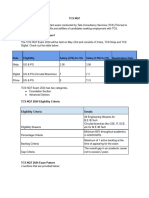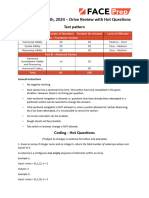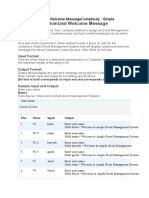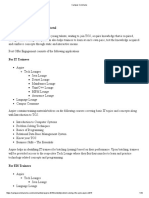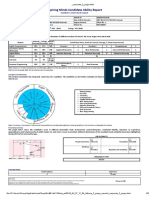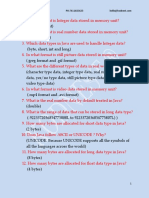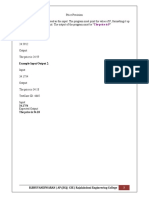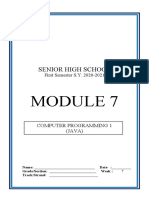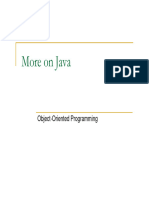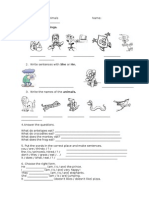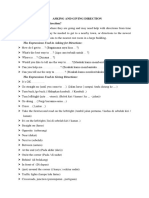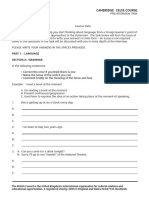0% found this document useful (0 votes)
71 views6 pagesJava Datatypes
This document discusses the differences between primitive and reference variables in Java. Primitive variables directly store a value, while reference variables store a reference to an object in memory rather than the object itself. The reference allows accessing the actual object using dot notation. A reference variable is like a remote control that provides access to an object's methods and fields. The size of a reference variable is implementation-dependent, but all references are the same size regardless of the referenced object. Arithmetic cannot be performed on reference variables.
Uploaded by
BITPIllS IT SOLUTIONS & ConsultancyCopyright
© © All Rights Reserved
We take content rights seriously. If you suspect this is your content, claim it here.
Available Formats
Download as PPTX, PDF, TXT or read online on Scribd
0% found this document useful (0 votes)
71 views6 pagesJava Datatypes
This document discusses the differences between primitive and reference variables in Java. Primitive variables directly store a value, while reference variables store a reference to an object in memory rather than the object itself. The reference allows accessing the actual object using dot notation. A reference variable is like a remote control that provides access to an object's methods and fields. The size of a reference variable is implementation-dependent, but all references are the same size regardless of the referenced object. Arithmetic cannot be performed on reference variables.
Uploaded by
BITPIllS IT SOLUTIONS & ConsultancyCopyright
© © All Rights Reserved
We take content rights seriously. If you suspect this is your content, claim it here.
Available Formats
Download as PPTX, PDF, TXT or read online on Scribd
/ 6



